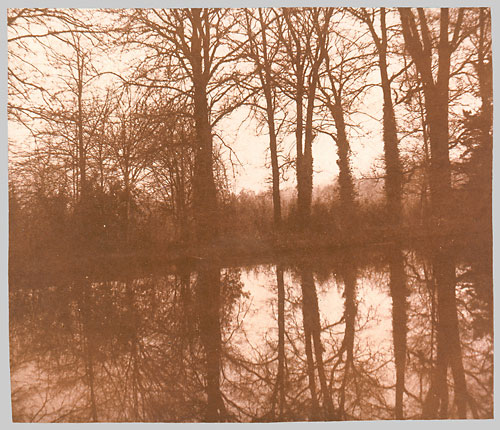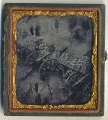| Newsletter for Collectors - Vol 7.4 | August 31, 2013 | | | Home • What‘s New • Photographers • Online Exhibitions
Contents • Alphabetical • Styles and movements • Articles
Visual Indexes • Galleries & Dealers • Timelines • Techniques
Library • Contact us Welcome to another Luminous-Lint Newsletter.
Up and down like a Coney Island Rollercoaster... |
Luminous-Lint has been going up and down a bit as we prepare for the next phase.
I've decided, with advice and assistance from Dick Moore, not only a close friend but also the most technically astute person I know, to move Luminous-Lint to Amazon Web Services (AWS) as this will allow for limitless growth in the future and will be able to cope with bursts of activity such as university classes coming on all at the same time. It will also allow for the integration of video and many other features in more flexible ways.
It will take a month or so to get the new systems tested and then I'll upload all the new material. Phew.....
This is the bit where you say - "There is going to be more!" - "Oh Yes"
Everything so far has been putting together the foundations for Luminous-Lint and it is only now that it can start coming together. Since June of last year there have been hints of the changes and I gave a short explanation in the last Newsletter (Vol 7.03 - July 1, 2013) and below I'll provide a bit more detail.
Here are the steps I've outlined so far...
- The raw evidence for photohistory is being collected and added in.
- Many hundreds of Online Exhibitions and thousands of Visual Indexes have been added.
- Original source texts are being incorporated.
- Online bibliographies have been added and are being continually improved.
- The various Contents pages and search tools are being enhanced.
So what is next?
We now have a good starting point and it has taken about ten years to lay the groundwork and now it starts to get interesting.
The next phase concerns the many hundreds of Themes (portrait, landscape etc) on Luminous-Lint and you can access these through the Contents page, Alphabetically, Styles and Movements and lots of other ways.
No text on Luminous-Lint is ever finished and everything is in flux with each piece of the puzzle improving over time. This is a part of the design so as information comes in errors are corrected, facts are checked and the whole project improves.
If we use the Abstract Theme as an example you will notice that there is an area at the top of the page that says:
This theme includes example sections and will be revised and added to as we proceed. Suggestions for additions, improvements and the correction of factual errors are always appreciated.
Status: Collect > Document > Analyse > Improve
|
The Status line will be important as we progress over the coming years from "Collect" to "Document" to "Analyse" to "Improve" and here are the steps:
Collect: At the moment all Themes are set to Collect as the evidence is being brought together for each Theme - this includes images, online exhibitions, visual indexes, source materials, explanatory texts, issue listings for major publications such as Camera Notes, Camera Work and USSR in Construction, Daguerreotype plate sizes and anything we feel is a useful resource.
Document: Here paragraphs are prepared that start to consolidate the visual evidence. For example there might be examples of photographs from a book but no explanation of the contextual significance of the book so that needs to be written along with the footnotes. For example if you look at an early version of the Theme on the American Civil War (1861-1865) and you scroll through the material you will get to the Footnotes section. Drafts of the 'Introductory texts' for each theme need to be added at the top to provide a context for all the evidence that follows.
Analyse: This is the "What is missing?" and "How does this make sense?" phase. Where there are gaps in the evidence the missing material is sought out and integrated to illustrate any hypotheses made. Once this is done a preliminary attempt at drafting the 'Conclusions' will be carried out to point out the trends within the Theme and connections to other Themes. The text in the "Conclusions" for each Theme will contain personal judgements and you will want to make your own so all the visual evidence such as Online Exhibitions and Visual Indexes for the Theme will be available. Supported by this visually-rich material you will be able to go through, develop your own hypotheses and point out the errors in mine!
Improve: The process never stops and we will iterate as new content arrives in to improve each Theme. We will split Themes and add new ones as we need to. As I said before nothing is ever finished so contemporary trends will be added in as we go.
Do send through corrections or ideas for Themes you feel are missing.
The mottoes for Luminous-Lint are "Nothing is perfect but we can get a little better every day" and "Sharing makes the world a better place". As we improve the Themes we will create free resources that help us all get the most of photohistory - a subject we are all passionate about.
As we are now drafting texts we need to ensure that every fact has footnotes and is linked back to the images, books, articles, interviews, unpublished sources, collections and personal communications involved just as we would in any scholarly book or peer-reviewed article. You will notice that a "Footnotes" section has been placed before the "Further research" section for each Theme and this encourages you to fact check and go deeper.
The Theme pages on Luminous-Lint can be vast and are not cut up for optimum display on tablets or mobile devices. At this stage of Luminous-Lint the emphasis is on bringing the content together rather than designing the best interface for particular technologies. In the future we can address this issue as necessary.
Searching on Luminous-Lint |
Can't find what you are looking for on Luminous-Lint?
Well that is my fault... whoops...
A quick reminder on how to get the best from the website - the Getting around navigation area on the left of the pages is the key to this. There is dropdown search option with three choices "Photographers", "Connections" and "Directory". "Photographers" is self-explanatory just enter a bit of the name and you'll do fine - you don't need to type in a full name or use accents. "Directory" takes you to contact details for museums, galleries, dealers and major institutions related to photography around the world.
READ THIS BIT: "Connections" is the option you may not be using and it is powerful. Once again a word or two is fine - try "France", "album" or "studio" or perhaps a photographer such as "Talbot" to get a handle on what is possible. Once you have an image up on the screen it will lead you through an immense labyrinth of interconnections.
If you go to the image below by Henry Fox Talbot (The Metropolitan Museum of Art, 2005.100.2) and scroll down the whole page you'll see the flexibility of this type of search:

Click on the photograph and remember to scroll down...
There is no single way of getting around Luminous-Lint and by exploring you will uncover thought-provoking connections between photographs. For example the connections between the Talbot photograph above and works by William James Mullins, Edward Steichen, Eugène Atget, Albert Renger-Patzsch, an unidentified photographer and Jack Burman - makes one ponder a bit.
How about allowing users to add comments? |
I'm considering a trial allowing approved users to start adding in research questions, factual corrections and new research to the Themes and Photographer pages. This will be controlled and monitored so it is of the maximum benefit to researchers, photohistorians and curators. This is under consideration at this stage and I will only add it in after Luminous-Lint has been moved to Amazon Web Services (AWS) and has been fully tested.
Fakes, forgeries, tricks, deceptions or a mistake by a dealer? |
I'm noting with increasing frequency the sale of suspect copies of images on Ebay that use the high quality scans put up by institutions as the source.
An example from the past week illustrates the issue:
 
LEFT: From the Metropolitan Museum of Art - Pierre-Ambroise Richebourg, "Barricades de la Commune, avril 71. Coin de la place Hotel de Ville & de la rue de Rivoli", 1871, Albumen silver print, 10.6 x 10 cm (4 3/16 x 3 15/16 ins), Metropolitan Museum of Art, Purchase, The Horace W. Goldsmith Foundation Gift, through Joyce and Robert Menschel, 1998, Accession Number: 1998.334.1
RIGHT: The copy on Ebay - Unidentified photographer, 1871, (stated to be before 1951) "Comune of Paris", Ambrotype - Posted on Ebay by para70_0 and described as "COMMUNE DE PARIS 1871 1/6 plate ambrotype HALF CASED NOT DAGUERREOTYPE" for an auction ending 30th August 2013 (13:51:21 PDT). The asking price was $899.00 and the bid price rose to around $2,000.
The intention of the person selling the photograph is key here and difficult to determine. If the seller is intentionally misrepresenting the work and it is a modern copy it is fraud. This activity will increase so take care.
If you come across examples pass them on so I can include them on Luminous-Lint to educate, and warn, others.
Thanks for your patience and for sharing |
Luminous-Lint could not have happened without your help. It has been a long time in preparation but over the coming years we will start to see the different pieces coming together. Some of you provided information years ago that will now be linked in with ever more complete information and connections - you have all been understanding and patient as Luminous-Lint has evolved. It has been an incredible journey and we still have a long way to go but we are on the right track. When we get this right we will have hundreds of parallel peer-reviewed histories of photography all interconnected with the best illustrative examples from private and public collections. Thanks for all your friendship and support.
I hope you continue to enjoy Luminous-Lint and find it useful.
All the best and thanks again, Alan
|
|
Jed Devine (1944, 31 August - ) was born - US, NY, Mount Kisco. American artist and photographer. He prints platinum prints onto Japanese rice paper.
Steve Giovinco (1961, 31 August - ) was born - US, NY, Tarrytown. Contemporary American photographer.
Helen Levitt (1913, 31 August - 2009, 29 March) was born - US, NY, New York. American street life photographer - particularly in the poorer districts of New York.
Amy Stein (1970, 31 August - ) was born - US, Washington DC. Contemporary American photographer.
Raoul Ubac (1910, 31 August - 1985, 24 March) was born - Belgium, Malmédy. Painter and photographer who became an active member of the Surrealist movement in Paris in the 1930s. He published in the French Surrealist magazine ‘Minotaur‘.
Louis Ducos du Hauron (1837, 8 December - 1920, 31 August) died - France, Agen. French inventor and promoter of early color photographic processes. |
| |
|

